Miracle in the Rain

Brief Synopsis
Cast & Crew
Rudolph Maté
Jane Wyman
Van Johnson
Peggie Castle
Fred Clark
Eileen Heckart
Film Details
Technical Specs

Synopsis
In New York City in 1942, secretary Ruth Wood lives quietly with her ailing mother Agnes. Ruth's co-workers at Excelsior Shoe Manufacturing Co. are Grace Ullman and Millie Kranz, a young blonde who is having an affair with her married boss, Stephen Jalonik. Also in the office is Monty, a young shipping clerk classified by the draft as 4-F, who monitors the war's campaigns on a world map pinned to the wall. One evening after work, when a cloudburst forces Ruth and other pedestrians to take shelter in the vestibule of an office building, Arthur Hugenon, a cheerful, talkative G.I. stationed in the area, surprises the shy Ruth by starting a conversation. When he invites her to dinner, she declines, saying that her housebound mother is expecting her. Undeterred, Art buys food for three at a delicatessen and accompanies Ruth home. Agnes, who has distrusted men since her husband Harry left her for another woman ten years earlier, receives Art with little enthusiasm. During the meal, Art, who grew up on a Tennessee farm, captivates Ruth with his stories and afterward entertains them by playing the piano. Upon finding the manuscript of an unfinished song Harry composed, Art asks permission to take it back to camp, where he and an Army buddy will write lyrics for it. On the weekend, Art takes Ruth and Grace to a matinee. On their way to a restaurant, they stop at an auction and Ruth impulsively bids on an antique Roman coin, which she gives to Art for good luck. At the Café Normandy, where they have dinner, Ruth is unaware that the piano player is her father, whom she has not seen since he left Agnes. However, Harry recognizes Ruth and confides to the bartender that he has been too ashamed to return to his family. Later, Ruth tells Art that Agnes tried to kill herself after Harry left and still hopes for his return. On their next date, Art sings for Ruth "I'll Always Believe in You," the lyrics he and his friend have written for Harry's song. As Ruth and Art walk through Central Park, Ruth voices her fears about the war and Art tells her she must have faith. They then encounter Sgt. Gil Parker, while he takes snapshots of his new bride, Arleene Witchy, who works as a striptease dancer. Gil asks Art to take their picture and then offers to photograph Art and Ruth. In private, Gil warns Art that his division will soon be shipped overseas, but Art refuses to believe the rumor. At the lagoon, where children are sailing toy boats, Art recognizes the name of an elderly man, Commodore Eli B. Windgate. "Windy," as he is now called, is a former yacht owner who owned many of the surrounding buildings before losing his fortune. Art, who hopes to be a reporter after the war, senses a good feature story and interviews Windy on the spot. He then takes Ruth to the New York Times Building and convinces the city editor to let him write the story. Instead of taking payment, Art asks to be considered for a reporting job after the war. On their next date, Art arrives late riding on a truck filled with other soldiers. Having only a few minutes before he will be shipped out, he asks Ruth to marry him when he returns and, to allay her fears, says he still has the lucky Roman coin. For three months, Ruth writes Art every day, but receives no letters in return. Finally, a specially delivered letter arrives, informing her that Art died on the battlefield and that his dying wish was that she be told he still loves her. Ruth despairs, although her friends and co-workers try to console her. Millie, moved by Ruth's misfortune, drops Jalonik as her lover and takes another job. Grace finds Ruth mourning in Central Park and takes her to St. Patrick's Cathedral, where Ruth lights candles under the statue of St. Andrew. Jalonik, hoping Ruth will fill the void left by Millie in his personal life, takes her to the Café Normandy to cheer her up, but Ruth is too grief-stricken to pay attention to him. Art's friend Dixie publishes Harry's song under his own name, and when Harry hears it on the radio, he calls Agnes to ask her what happened to his manuscript. When Agnes answers the phone, he loses his nerve and hangs up. Although he has written several letters to Agnes, Harry always loses courage and tears them up. Ruth returns often to the statue of St. Andrew and talks to the young priest there. Losing interest in life, she ignores a cold, which turns into pneumonia. Mrs. Hammer, the upstairs neighbor who has often helped Ruth care for Agnes, now helps Agnes nurse Ruth. One rainy night, the feverish Ruth leaves the apartment while her mother dozes off, just before Harry, having mustered his courage, goes there to apologize to Agnes for leaving. Ruth's parents realize Ruth is missing just as Grace telephones. Hearing the Ruth has gone, Graces realizes that Ruth must have gone to the cathedral. Ruth is climbing the cathedral steps when she hears Art calling to her. In her delirium, she sees Art come to her and tell her that love never dies. Because he no longer needs the Roman coin, Art gives it to Ruth. Soon after, the priest finds Ruth passed out on the steps. Graces arrives a moment later. When the priest finds the coin clasped in Rth's hand, he shows it to Grace, who recognizes it and realizes that, for a brief time, Art returned to Ruth.

Director
Rudolph Maté
Cast
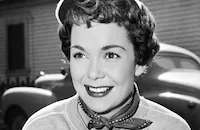
Jane Wyman

Van Johnson

Peggie Castle
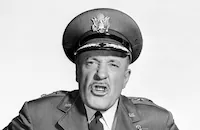
Fred Clark

Eileen Heckart

Josephine Hutchinson
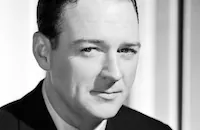
William Gargan

Marcel Dalio

George Givot

Barbara Nichols

Halliwell Hobbes
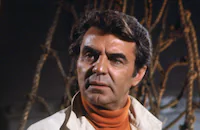
Paul Picerni
Alan King
Irene Seidner
Arte Johnson
Grandon Rhodes
Marian Holmes
Minerva Urecal
Roxanne Arlen

Peter Mamakos
Malcolm Atterbury
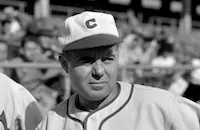
Ray Walker
Jess Kirkpatrick
Charles Meredith
Frank Scannell
Crew
Milo Anderson
Gordon Bau
Eugene Busch
Mel Dellar
Ben Hecht
Ray Heindorf
M. K. Jerome
Leo K. Kuter
Robert B. Lee
Russell Metty
Leonid Raab
Thomas Reilly
Ed Roden
Frank P. Rosenberg
William Wallace
Ned Washington
Franz Waxman
Lee White

Videos
Movie Clip




Hosted Intro
Film Details
Technical Specs

Articles
Miracle in the Rain
Directed on a healthy $1.1 million budget by Rudolph Maté, an excellent former cinematographer who had started directing in 1947, and shot by Russell Metty, who would soon lens Touch of Evil (1958) and Spartacus (1960), Miracle in the Rain certainly looks impressive. While interiors were filmed on Hollywood sound stages, the picture also shot all over New York City, including Central Park and St. Patrick's Cathedral, a key setting for the story's climax.
In fact, Miracle in the Rain has the distinction of being the first ever to be granted permission to shoot inside the famed cathedral, albeit from 10 pm to dawn each night (for one week). To create rain, film historian Ronald L. Davis has written, "fire hydrants were tapped and a steady shower was aimed at the great cathedral doors while scenes were played."
Van Johnson had read Hecht's novel years earlier and thought that his friend and fellow star Robert Walker would be perfect for the leading man. He had even suggested it to him at the time, but now, when the film was finally being made, Walker was dead. "I thought of him every day when I was on the set," Johnson later said.
Leading lady Jane Wyman had recently starred in a big moneymaker: Magnificent Obsession. Since that picture's release in August 1954, she had acted in two more films in quick succession: Lucy Gallant (1955), for Paramount, and All That Heaven Allows (1955), for Universal. By the time she finished Warners' Miracle in the Rain, all three pictures were in the can without having yet been released. Lucy Gallant finally opened in October 1955 and All That Heaven Allows followed on Christmas Day. Both were blasted by the critics, though All That Heaven Allows did make some money and is now considered a classic of '50s melodrama. Suddenly, the prospect of a third Wyman film seemed like oversaturation, and Warner Brothers, which had rushed Miracle in the Rain through postproduction in order to qualify for Oscars®, held up release to the following spring.
It didn't make much difference. Miracle in the Rain opened in April 1956 and caused no great shakes with the public or the critics, though Wyman's vulnerable performance did receive some notice. "Overly saccharine," concluded The New York Times. "Has moments of insight, sensitivity and compassion...[and] hits high, lovely notes on occasion..., [but] falls short of its potential."
A promotional contest organized by Warner Brothers, whereby 32 winning secretaries from around the country were flown to Hollywood for a three-day tour and the chance to meet movie stars, didn't have much effect. In fact, Wyman herself later attributed the film's commercial failure to a lack of proper promotion. She told film critic Rex Reed: "What a wonderful movie! But by the time we got that one out, Van Johnson and I weren't so big, and Warners was already spending all its money promoting Giant (1956), so it never got any attention.
Miracle in the Rain was the final feature film appearance for Halliwell Hobbes, a longtime British character actor recognizable from countless earlier pictures. He was 79 when he made this film, and died in 1962. Look also for Marcel Dalio - he played the croupier in Casablanca (1942) - as a waiter.
Producer: Frank P. Rosenberg
Director: Rudolph Mate
Screenplay: Ben Hecht (novel and screenplay)
Cinematography: Russell Metty
Art Direction: Leo K. Kuter
Music: Franz Waxman
Film Editing: Thomas Reilly
Cast: Jane Wyman (Ruth Wood), Van Johnson (Pvt. Arthur 'Art' Hugenon), Peggie Castle (Millie Kranz), Fred Clark (Steven Jalonik), Eileen Heckart (Grace Ullman), Josephine Hutchinson (Agnes Wood), William Gargan (Harry Wood), Marcel Dalio (Marcel - Waiter), George Givot (Headwaiter), Barbara Nichols (Arlene Parker nee Witchy), Halliwell Hobbes (Ely B. 'Windy' Windgate), Paul Picerni (Priest), Alan King (Sgt. Gilbert 'Gil' Parker).
BW-108m.
by Jeremy Arnold
Sources:
Ronald L. Davis, Van Johnson: MGM's Golden Boy
Joe Morella and Edward Z. Epstein, Jane Wyman: A Biography

Miracle in the Rain
TCM Remembers - Eileen Heckart
Eileen Heckart, who won a Best Supporting Actress Oscar for Butterflies Are Free (1972), died December 31st at the age of 82. Heckart was born in 1919 in Columbus, Ohio and became interested in acting while in college. She moved to NYC in 1942, married her college boyfriend the following year (a marriage that lasted until his death in 1995) and started acting on stage. Soon she was appearing in live dramatic TV such as The Philco Television Playhouse and Studio One. Her first feature film appearance was as a waitress in Bus Stop (1956) but it was her role as a grieving mother in the following year's The Bad Seed that really attracted notice and an Oscar nomination for Best Supporting Actress. Heckart spent more time on Broadway and TV, making only occasional film appearances in Heller in Pink Tights (1960), No Way to Treat a Lady (1968) and Heartbreak Ridge (1986). She won one Emmy and was nominated for five others.
TCM REMEMBERS DAVID SWIFT, 1919-2001
Director David Swift died December 31st at the age of 82. Swift was best-known for the 1967 film version of the Broadway musical, How to Succeed in Business Without Really Trying (he also appears in a cameo), Good Neighbor Sam (1964) starring Jack Lemmon and The Parent Trap (1961), all of which he also co-wrote. Swift was born in Minnesota but moved to California in the early 30s so he could work for Disney as an assistant animator, contributing to a string of classics from Dumbo (1941) to Fantasia (1940) to Snow White (1937). Swift also worked with madcap animator Tex Avery at MGM. He later became a TV and radio comedy writer and by the 1950s was directing episodes of TV series like Wagon Train, The Rifleman, Alfred Hitchcock Presents, Playhouse 90 and others. Swift also created Mr. Peepers (1952), one of TV's first hit series and a multiple Emmy nominee. Swift's first feature film was Pollyanna (1960) for which he recorded a DVD commentary last year. Swift twice received Writers Guild nominations for work on How to Succeed in Business Without Really Trying and The Parent Trap.
TCM REMEMBERS PAUL LANDRES, 1912-2001
Prolific B-movie director Paul Landres died December 26th at the age of 89. Landres was born in New York City in 1912 but his family soon moved to Los Angeles where he grew up. He spent a couple of years attending UCLA before becoming an assistant editor at Universal in the 1931. He became a full editor in 1937, working on such films as Pittsburgh (1942) and I Shot Jesse James (1949). His first directorial effort was 1949's Grand Canyon but he soon became fast and reliable, alternating B-movies with TV episodes.. His best known films are Go, Johnny, Go! (1958) with appearances by Chuck Berry and Jackie Wilson, the moody The Return of Dracula (1958) and the 1957 cult favorite The Vampire. His TV credits run to some 350 episodes for such series as Adam 12, Bonanza, Death Valley Days and numerous others. Landres was co-founder in 1950 of the honorary society American Cinema Editors.
BUDD BOETTICHER 1916-2001
When director Budd Boetticher died on November 29th, American film lost another master. Though not a household name, Boetticher made crisp, tightly wound movies with more substance and emotional depth than was apparent at first glance. Instead of a flashy style, Boetticher preferred one imaginatively simple and almost elegant at times. Because of this approach films like The Tall T (1957), Decision at Sundown (1957), The Bullfighter and the Lady (1951) and Ride Lonesome (1960) have withstood the test of time while more blatantly ambitious films now seem like period pieces.
Budd was born Oscar Boetticher in Chicago on July 29th, 1916. With a father who sold hardware, Boetticher didn't come from a particularly artistic background. In college he boxed and played football before graduating and heading to Mexico to follow what's surely one of the most unusual ways to enter the film industry: as a professional matador. That's what led an old friend to get Boetticher hired as a bullfighting advisor on the 1941 version of Blood and Sand. Boetticher quickly took other small jobs in Hollywood before becoming an assistant director for films like Cover Girl. In 1944, he directed his first film, the Boston Blackie entry One Mysterious Night. Boetticher made a series of other B-movies, like the underrated film noir Behind Locked Doors (1948), through the rest of the decade.
Boetticher really hit his stride in the 50s when he began to get higher profile assignments, including the semi-autobiographical The Bullfighter and the Lady in 1951 which resulted in Boetticher's only Oscar nomination, for Best Writing. Sam Peckinpah later said he saw the film ten times. Other highlights of this period include Seminole (1953) (one of the first Hollywood films sympathetic to American Indians), the stylishly tight thriller The Killer Is Loose (1956) and the minor classic Horizons West (1952). In the late 50s, Boetticher also started directing TV episodes of series like Maverick and 77 Sunset Strip.
In 1956, Boetticher started a string of films that really established his reputation. These six Westerns starring Randolph Scott are known as the Ranown films after the production company named after Randolph Scott and producer Harry Joe Brown. Actually the first, Seven Men from Now (1956), was produced by a different company but all of them fit together, pushing the idea of the lone cowboy seeking revenge into new territory. The sharp Decision at Sundown twists Western cliche into one of the bleakest endings to slip through the Hollywood gates. The Tall T examines the genre's violent tendencies while Ride Lonesome and Buchanan Rides Alone (1958) have titles appropriate to their Beckett-like stories. The final film, Comanche Station, appeared in 1960.
That was the same year Boetticher made one of the best gangster films, The Rise and Fall of Legs Diamond, before watching everything fall apart. He and his wife decided to make a documentary about the famous matador Carlos Arruza and headed to Mexico. There Boetticher saw Arruza and much of the film crew die in an accident, almost died himself from an illness, separated from and divorced his wife (Debra Paget), and then spent time in various jails and even briefly a mental institution. This harrowing experience left him bankrupt but he still managed to complete the film, Arruza (1968), which gathered acclaim from the few who've been able to see it.
Boetticher managed to make just one more film, My Kingdom For... (1985), a self-reflexive documentary about raising Andalusian horses. He also made a cameo appearance in the Mel Gibson-Kurt Russell suspense thriller, Tequila Sunrise (1988). He died from complications from surgery at the age of 85.
By Lang Thompson
TCM Remembers - Eileen Heckart
Quotes
Trivia
Notes
Voice-over narration is heard at the beginning of the film, introducing the setting as New York City, May 1942. At the end of the film, the narrator says, "That's the way we heard it. We'd like to believe it's true!" Ben Hecht's onscreen credit reads: "Novel and screenplay by Ben Hecht." A condensed version of author Ben Hecht's 1943 novel, Miracle in the Rain, appeared in the April 3, 1943 Saturday Evening Post. According to a February 1944 Hollywood Reporter news item, Hecht was planning to write, direct and produce a film version of his story with the help of cameraman Lee Garmes and assistant director Harold Godsoe. July 1947 Hollywood Reporter and Los Angeles Examiner news items reported that Benedict Bogeaus purchased the property for his company, Arcadia Productions, which he co-owned with actress Ida Lupino. According to the Los Angeles Examiner news item, Lupino and Bogeaus planned for Lupino to star in the film and King Vidor to direct.
In January 1953, Los Angeles Herald Express reported that, prior to Bogeaus and Lupino's acquisition, the property had belonged to M-G-M and afterward changed hands several times: The Arcadia producers sold it to Raphael Hakim and a year later Alfred Guarini bought it as a starring vehicle for his wife, Italian actress Isa Miranda. Charles Feldman next bought the property, planning to produce it with Vittorio de Sica. An April 1952 Variety news item reported that De Sica and Feldman planned to produce the property under a different title and that the script, which Thornton Wilder and Orin Jennings would write, would be set in Chicago.
A May 1954 Daily Variety news item announced that Frank P. Rosenberg acquired the film rights to the property and was at one time negotiating with Audrey Hepburn for the lead role. Neither Sal Mineo, who was reported to be cast by a May 1955 Hollywood Reporter news item, nor Biff Elliott, who tested for the lead, according to an April 1955 Hollywood Reporter news item, appeared in the released film. Although their appearance in the film has not been confirmed, Hollywood Reporter news items add the following actors to the cast: Kathleen O'Malley, Harry Harvey, Jr., Anna Dewey, Chalo Alvarado, Darlene Fields and Eddie Foy III. Actress Eileen Heckart's name is misspelled as "Hackart" in the Variety review. Although June 1955 Hollywood Reporter news item added Paul Maxey to the cast, he did not appear in the viewed print. Miracle in the Rain marked the final film of long-time character actor Halliwell Hobbes, who died in 1962.
Portions of the film were shot in various locations in New York City, among them Central Park and St. Patrick's Cathedral. According to an undated, but contemporary, Hollywood Citizen-News article found in the file for the film at the AMPAS library, Miracle in the Rain marked the first time the interior of the cathedral appeared in a commercial film. According to a February 1956 Hollywood Reporter news item, a special screening of the film was held for New York City's cardinal, Francis J. Spellman, who was interested in seeing the scenes filmed there. As noted in a March 1955 Daily Variety news item, a marquee advertising Miracle in the Rain appears in a street scene in the film Illegal, which was also produced by Frank P. Rosenberg.

Miscellaneous Notes
Released in United States Spring April 1956
Released in United States Spring April 1956















